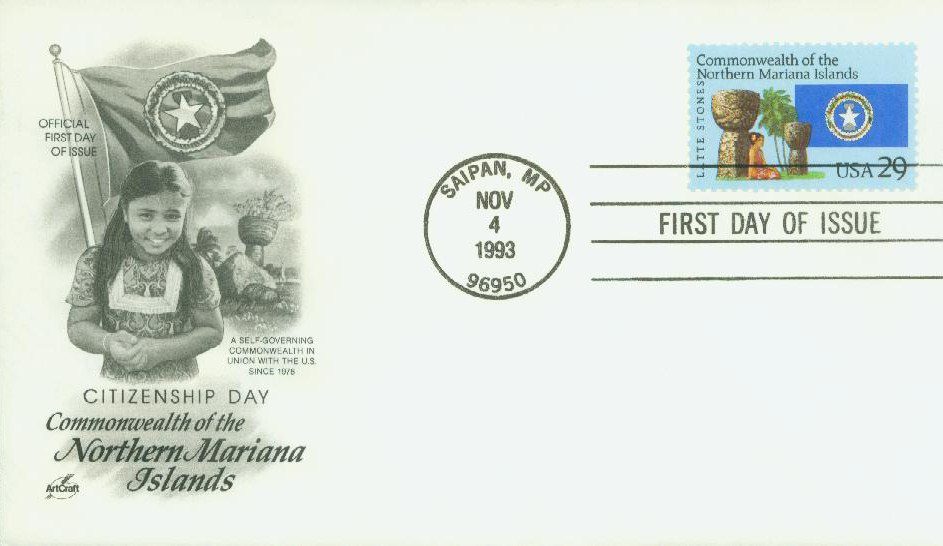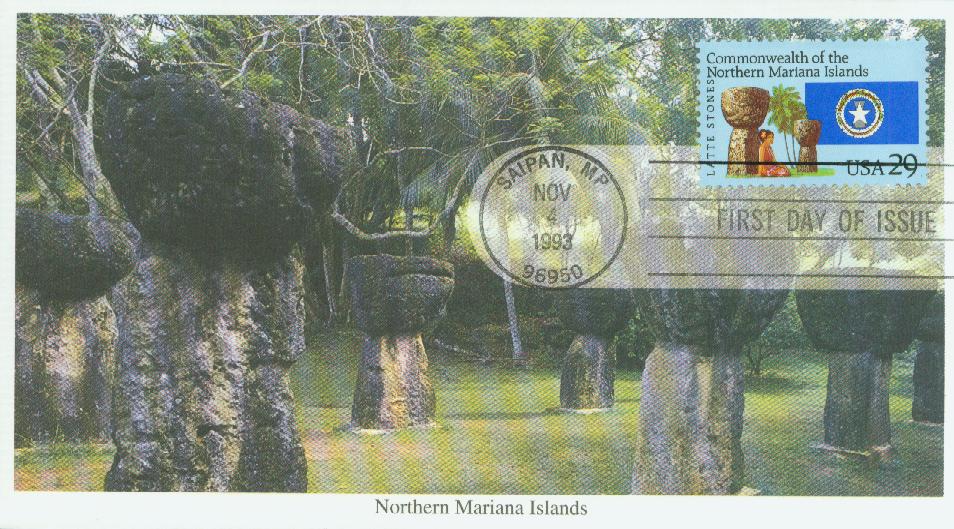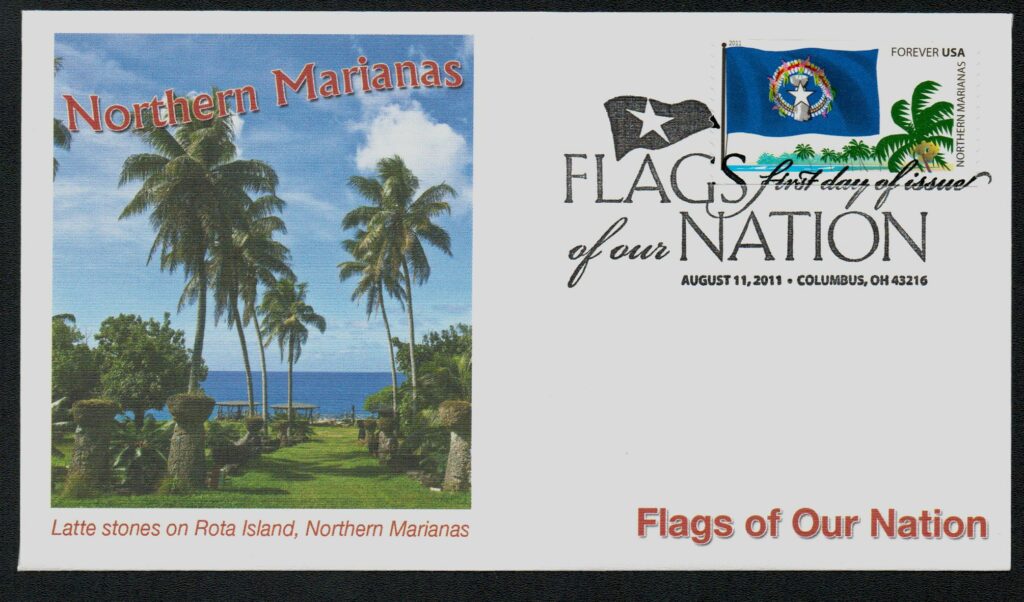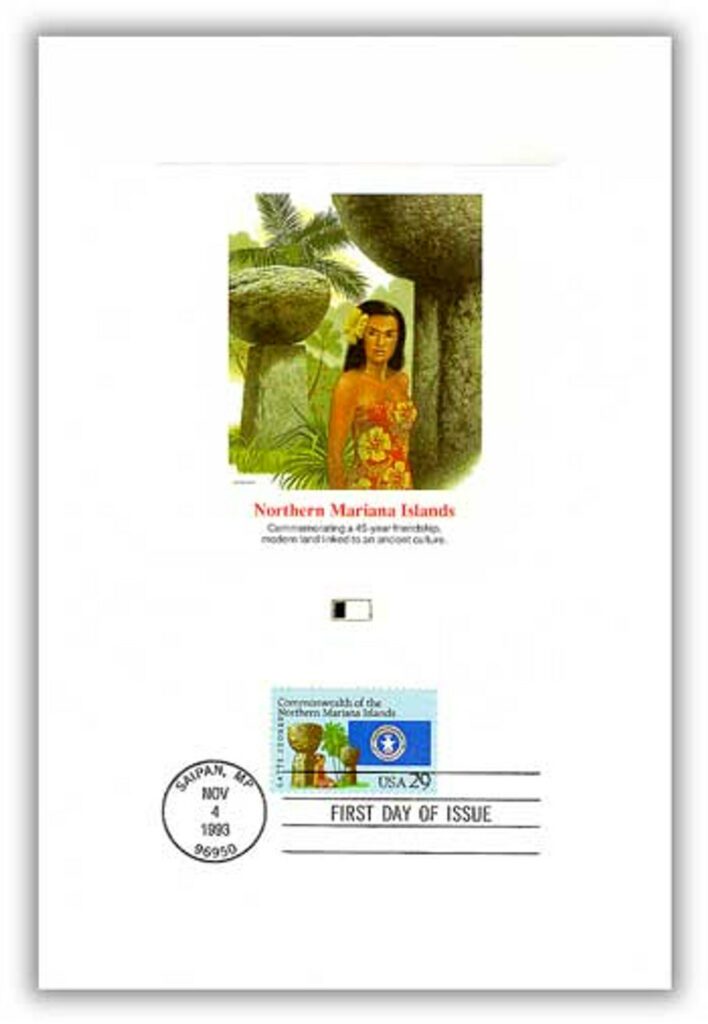
On November 4, 1986, the Northern Marianas became a territory of the United States.
An expedition led by Spanish explorer Ferdinand Magellan in 1521 was the first European contact with the native Chamorro. Magellan landed on Guam, explored the neighboring islands, and called the group the “Islands of the Lateen Sails,” named after the out-rigger sailboats used by the natives.
The initial meeting between Magellan and the Chamorro went poorly. Chamorro natives stole a boat from the Spanish, who retaliated by burning down a village of about 40 homes and killing half a dozen residents. The Spanish left and Magellan renamed the islands the “Islands of Thieves.” The name remained for more than a century. The Spanish claimed the islands as part of the Spanish East Indies, governed from the Philippines.
Spanish missionaries began visiting the islands in the 17th century. In 1668, Padre Diego Luis de San Vitores established a mission on nearby Guam and renamed the islands the “Mariana Islands,” after Spanish Queen Regent Mariana of Austria. But relations grew worse after a few years, and a Spanish-Chamorro War began that lasted for more than 20 years. Ultimately, the Chamorro were nearly wiped out, and the Spanish forced the few remaining to live on Guam.
Natives from the East Caroline Islands (to the south) populated the Marianas in the absence of the Chamorro, starting in the early 1800s. The Chamorro, whose population slowly recovered after the war with the Spanish, were eventually able to return, and both cultures have lived there since. Today, both the Chamorro and Caroline languages are accepted as official languages in the Northern Marianas, along with English.
Spanish power declined throughout the 19th century, culminating in a resounding defeat in the Spanish-American War in 1898. As a result, Spain ceded Guam to the United States and sold the Northern Mariana Islands (as well as the Caroline and the Marshall Islands) to Germany. German possession lasted until World War I when Japan declared war on Germany and took control of the Marianas.
Following the war, the League of Nations (predecessor to the United Nations) granted Japan a mandate to govern the islands. The Japanese improved agriculture and concentrated on sugar cane production. The fishing industry also became more successful. Northern Mariana’s population grew quickly as many immigrants came from Japan and Okinawa.
Japan left the League of Nations in 1935. By then, the population of the Marianas had grown to more than 30,000, of which only a fraction was native to the islands. As tensions mounted in the Pacific and war appeared inevitable, Japanese military forces grew to nearly 30,000 on Saipan.
The strategic location of the Mariana Islands made the islands a key focus in World War II. Following the Japanese attack on Pearl Harbor, it took several years for the US to conquer Japan’s ring of fortified islands and reach the Marianas.
Finally, in June 1944, the US fleet surrounded Saipan and Tinian and began their assault. Bitter fighting lasted for nearly a month before American control of the islands was established. More than 240 Japanese planes were shot down in what came to be called the “Great Marianas Turkey Shoot.” Twenty-nine American planes were lost.
Besides acting as an important springboard for further US military action, the Marianas had one other important role in the war. The small island of Tinian was the launching pad for Enola Gay, the B-29 bomber that dropped the first atomic bomb. Six years after the war ended, 18 Japanese survivors hiding on the island of Anatahan were the last to surrender.
Following WWII, the United Nations included the Marianas as part of the “Trust Territory of the Pacific Islands,” under US administration. The Trust Territory included Northern Mariana Islands, Palau, the Marshall Islands, and Micronesia, with Saipan as the administrative capital. In 1986, the United Nations concluded that the US had satisfied its obligation as an administrator. Several islands became independent states, while others – such as the Northern Marianas – sought to increase ties with the US. The Northern Marianas had begun negotiations for US Territory status in 1972 and formed a commonwealth in 1978. It became a self-governing entity in union with the US, and on November 4, 1986, it was officially established as a US territory and all eligible residents were granted US citizenship.
Once full relations with the United States were established, the economy of the Northern Marianas began to improve, although it still relies heavily on US federal assistance. Tourism became a major industry, coming primarily from Japan. Tourism now accounts for half the working force and a quarter of the economy. The dominant industry, however, is textiles. The Northern Marianas are able to take advantage of more relaxed labor laws than are found elsewhere in the United States. At the same time, the Marianas are not subject to tariffs and taxes on imported clothing. Large numbers of foreign-born workers (mostly from China) make up a sizable portion of the labor force.
| FREE printable This Day in History album pages Download a PDF of today’s article. Get a binder or other supplies to create your This Day in History album. |
Discover what else happened on This Day in History.








The Commonwealth of the Northern Mariana Islands is obviously a “Commonwealth” not a Territory. Guam is a Territory of the United States. There is a difference.